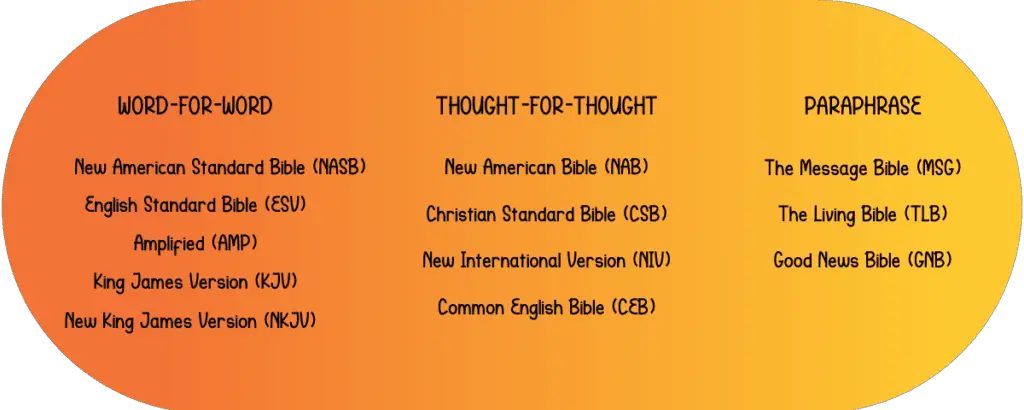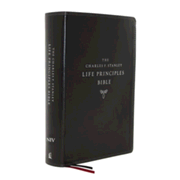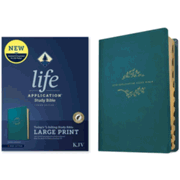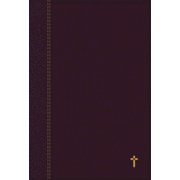How to Read the Bible: A Comprehensive Guide for Beginners
As you probably know, the Bible is one of history’s most important and influential texts. People worldwide have used it as a source of guidance, inspiration, and comfort.
But let’s be real; for beginners, it can be intimidating. So many books, chapters, and verses… where do you even begin?
If you’re new to reading the Bible and feeling a bit lost, I have just the thing for you. This comprehensive guide is a great starting point to help you get started.
You’ll learn all the basics of Bible reading, understand its context, and discover how to apply it to your everyday life.
In this step-by-step tutorial on how to read the Bible as a beginner, we’ll go over everything from the basics of Bible reading to the contextual significance of it all. And we’ll even look at how to integrate the teachings into your everyday life.

This post may contain affiliate links. Read the full disclosure here.
Understanding the Bible
The Scriptures were inspired, not the writers.
Did you know that the Bible was actually written by 40 different people over a period of 1500 years? It’s pretty wild when you think about it. These men wrote the inspired words of God. They didn’t write what they thought, or how it made them feel, or their interpretation of what they “thought” God was saying.
The Bible tells us that the words are inspired–or breathed out by God Himself and are not for personal interpretation.
All Scripture is breathed out by God and profitable for teaching, for reproof, for correction, and for training in righteousness. 2 Timothy 3:16 (ESV)
Knowing this first of all, that no prophecy of Scripture comes from someone’s own interpretation. For no prophecy was ever produced by the will of man, but men spoke from God as they were carried along by the Holy Spirit. 2 Peter 1:20-21 (ESV)
Even though the Bible was written by many men over thousands of years, it’s still God’s perfect and holy Word (Psalm 12:6).
How is that even possible? Well, the men were merely human instruments through which God was able to communicate His message to the world.
And God’s message stayed consistent through changing cultures and thousands of years.
It’s pretty incredible to think about how something written so long ago still has such relevance today. All in all, it just goes to show how amazing and powerful God truly is!
So, the Bible is not just one book, per se, but a collection of books that tell the story of God’s relationship with humanity. It is divided into two main parts: the Old and New. The Old Testament contains 39 books, while the New Testament contains 27.
Choosing a Translation
Many Bible translations are available, each with its unique style and level of readability. Some translations are more literal, while others are more paraphrased. We could spend hours discussing the differences, the pros, and the cons. But the most important thing about choosing a translation is choosing the translation that you find easy to read and understand.
Most translations have been translated by God-honoring, highly educated scholars who are trained in interpreting Aramaic, Greek, and Hebrew into English.
For the most part, there are three types of translations:
- word for word
- thought for thought
- paraphrased
Word-for-word translations prioritize literal accuracy, while thought-for-thought translations aim for readability without sacrificing accuracy. And paraphrased translations focus on conveying the ideas of the passage for easy explanation. It’s kind of like a commentary, and it’s often used to help people get a general idea of what the passage is about.

I cut my teeth on the KJV, but now I use the ESV. And I also love to read the Message occasionally, just because it’s so wordy. If you would like to compare versions, Olive Tree Ministries has a whole page dedicated to explaining the differences. Just follow the link below.
A Guide to Finding the Right Bible Translation – Olive Tree Ministries
Getting Started with Bible Reading
If you’re planning to dive into reading the Bible, there are a couple of things you’ll want to keep in mind. First and foremost, it’s important to set aside some dedicated time for it each day.
Whether you prefer to read just a few verses or a whole chapter at a time that’s totally up to you. The key is to make it a consistent habit so that it becomes part of your daily routine.
One thing that can be super helpful in establishing this habit is to create a plan or a reading schedule for yourself. This can help you stay on track and make sure you’re covering all the ground you want to cover.
Plus, having a plan can be motivating in and of itself since you’ll be able to see your progress as you work your way through the text.
Check out the reading plans I have listed in the Resource section. I’m sure you’ll find one that’s easy and doable.
Reading Techniques
If you’re looking to really absorb and understand what you’re reading in the Bible, there are some techniques you might want to try out.
One technique is to read aloud. This can help you engage with the text more actively and make it easier to retain what you’re reading.
Another technique is to read slowly. This might sound obvious, but it’s actually really important. Taking your time reading the text can help you catch nuances found in the text and really think about what you’re reading. Plus, it can make the whole experience more meditative and enjoyable.
Finally, don’t be afraid to take breaks! Reading the Bible can be intense, and it’s okay to step away from it for a bit and come back to it later. In fact, taking breaks can help you maintain your focus and keep your mind fresh. So, don’t feel like you have to power through the whole thing in one sitting. Take your time and find what works for you!
Understanding Context
It’s futile to read the Bible unless you understand the context. It’s important to take the time to think about what you’re reading and to understand it. That means considering not just the words on the page but also the historical, cultural, and literary context in which they were written.
By understanding the context of the Bible, you can gain a deeper appreciation for the language, metaphors, and symbolism used in the text. You’ll be able to see how different elements of the Bible relate to one another and how they fit into the broader context of history and culture.
So, as you start to read the Bible, take some time to dig into its context. Research the historical and cultural setting in which each book was written, and look for connections between different parts of the text. By doing so, you’ll be able to enrich your understanding of the Bible and gain new insights into its message.
Reading the Bible is a lifetime adventure. There’s no need to try and cram it into your brain like you are studying for an exam. Oh, there will be tests–but you won’t have to study for them!
Studying the Bible
I know I just said that you don’t have to study the Bible but read for context and take your time. However, there will be a time that you will want to dig deeper and begin an in-depth study on a topic, a book of the Bible, or a character from the Bible.
And to get the most out of your Bible study, you might consider using helpful tools like concordances, commentaries, and study Bibles.
Bible Concordance
A Concordance is a tool that helps you find specific words or passages in the Bible.
Basically, it’s like an index or a dictionary for the Bible. You can look up any word, and it’ll show you where it appears in the Bible. For example, if you want to find all the verses that talk about “love,” you can look up that word, and it’ll show you all the places in the Bible where it appears.
Concordances come in both print and digital formats, and they can be specific to a certain version of the Bible. Some of them even have info about the original languages used in the Bible, which is super interesting!
Bible Commentary
A Commentary is an explanation and interpretation of the Bible written by scholars, pastors, or theologians.
Commentaries are super helpful if you’re trying to understand the Bible better. They give you lots of info like the historical context of the text, what different literary features mean, what the theological themes are, and how you can apply all that knowledge to your own life.
You can find commentaries that cover specific books or sections of the Bible or ones that talk about the entire Bible. Some of them have a particular theological viewpoint, while others try to stay pretty neutral.
Just keep in mind that commentaries are written by humans, so they might have their own biases and perspectives. It’s always a good idea to read a few different ones and compare them to each other and to the actual text of the Bible.
Study Bible
A Study Bible is like a regular Bible but with extra stuff to help you understand it better.
A study Bible can include all kinds of helpful resources, like notes that explain what the text means, maps that show you where things happened, and articles that give you more info about the history and culture of the time. They’re great for personal study or for group study with friends. If you’re ever confused about what a certain part of the Bible means, a study Bible can help you figure it out.
Study Bibles come in all different translations, and they can be made specifically for different age groups too. So, if you want to get more out of your Bible reading and really understand what it’s all about, a study Bible might be just what you need.
By using these tools in your Bible study, you’ll be able to delve deeper into the meaning of the text and gain a richer understanding of its message. So, whether you’re just starting out with Bible study or you’re looking to take your understanding to the next level, don’t be afraid to incorporate some of these helpful tools into your routine!
Applying the Bible to Your Life
The Bible isn’t just a historical or religious text; it also has practical applications for our daily lives. By applying the messages in the Bible to our everyday circumstances, we can improve our relationships, decision-making, and personal growth.
But how do we apply the Bible to our lives? Well, it starts with understanding its message and how it relates to our current situation. By reflecting on the teachings and stories in the Bible, we can gain insights and wisdom that can help us navigate life’s challenges.
So, the Bible can be a valuable resource, whether you’re seeking guidance in a relationship, trying to make a tough decision, or simply looking to grow as a Christian. By applying its teachings to your life, you can experience a deeper sense of purpose and fulfillment.
You make known to me the path of life; in your presence there is fullness of joy; at your right hand are pleasures forevermore. Psalm 16:11 (ESV)
Common Questions about Bible Reading
In this section, I would like to answer five of the most common questions about Bible reading for those who are just starting to commit to reading the Bible. If you have other questions that you would like answered, please leave them in the comment section below.
Where should I start reading the Bible?
In most books, we start at the beginning. But the Bible is different than most books. Because it’s many books, you can start anywhere that may interest you.
Here are a few suggestions:
- Read the four Gospels: Matthew, Mark, Luke, and John. These four books tell the story of Jesus’ birth, life, death, and resurrection. In Matthew, you’ll see the promised Messiah, Mark tells us that He is the Son of God, Luke emphasizes the compassion of the Christ, and John shares the message of salvation.
- Read the Psalms: this book is full of praise, prophecy, pain, and prayer. The book will lead you into worship and help you when you’re going through difficult times.
- Start at the beginning: Read Genesis and find out how the world was created. But this spectacular moment leads right into the fall of man and the destruction of the world during the worldwide flood.
- Read Proverbs: if you are looking for some good advice on everyday living. Proverbs are full of wise sayings and biblical principles. This book has 31 chapters, so many people try to read it in a month.
I have some fun reading plans in the resource section of this guide. Be sure to check them out!
How do I deal with passages that are difficult or challenging to read?
This is practically the same question as before but with a little twist. Firstly, read the passage in context and look for other verses or passages that shed light on the meaning. You can use cross-referencing, commentaries, or google it. But if you google it, make sure you find trustworthy resources. A lot of trustworthy resources are usually on the first page when you google a question.
Secondly, consider using a study Bible with footnotes or explanations that can help clarify difficult passages. Study Bibles have explanations in the note section explaining many difficult verses.
Thirdly, feel free to seek guidance from someone with more experience or knowledge. Find someone at church, or join an online Bible study group. You can join Joyful Living Secrets Bible Study Group–for women only. We regularly share Bible reading plans and discuss any questions we have concerning the Bible.
And finally, remember that it’s okay to struggle with certain passages or ideas in the Bible. The Bible is a complex and multifaceted book, and even the most experienced readers can find it challenging at times. The important thing is to keep an open mind and to continue seeking understanding and growth.
What are some practical tips for developing a habit of reading the Bible regularly?
Developing a habit of reading the Bible regularly can be challenging, but here are some practical tips that might help:
- Set aside a specific time and place for reading the Bible each day. This could be in the morning before work, during your lunch break, or before bed. Think outside the box. Start with 5 minutes a day. Easy-peasy!
- Use a Bible reading plan or devotional guide to provide structure and accountability. Many great resources are available online that can help you stay on track.
- Find a Bible translation that you enjoy reading, and that is easy for you to understand. This can make a big difference in your motivation to read and comprehend what you’re reading.
- Make reading the Bible a priority by placing it at the top of your to-do list or by setting a reminder on your phone or calendar.
- Consider joining a Bible study group or finding an accountability partner who can help you stay motivated and committed to your reading goals. It can be as simple as asking someone to text you to check up on you. Or to find a buddy to read together–in person or on the phone.
- Remember that developing a habit takes time and patience. Don’t get discouraged if you miss a day or two – just pick up where you left off and keep going!
How can I apply what I learn from reading the Bible to my daily life?
Applying what you learn from reading the Bible to your daily life can be challenging, but it’s an important part of growing as a Christian. Here are some tips that might help:
- Look for practical applications in what you’re reading. Ask yourself questions like: What does this passage teach me about how to treat others? How can I apply this lesson to my work or my relationships?
- Reflect on what you’ve read and think about how you can put it into practice. Consider journaling or taking notes on what you’ve learned and how you plan to apply it.
- Pray for guidance and strength to put what you’ve learned into action. Ask God to help you see opportunities to apply what you’ve learned and to give you the courage to follow through.
- Seek support and accountability from other believers. Consider joining a Bible study group or finding an accountability partner who can help you stay focused on applying what you’re learning.
- Remember that applying what you learn from the Bible is a lifelong process. It takes time, patience, and practice, but the rewards are well worth it!
As obedient children, do not be conformed to the passions of your former ignorance, but as he who called you is holy, you also be holy in all your conduct, since it is written, "You shall be holy, for I am holy." 1 Peter 1:14-16 (ESV)
Tips for Successful Bible Reading
Once you’ve found a workable time to consistently read your Bible, there are additional steps you can take to deepen your understanding and connection to God’s Word. But you don’t have to begin these steps right away. Being consistent with Bible reading is the key to success.
- Start a journal: A journal is a helpful tool for recording your thoughts, prayers, and insights as you read.
- Memorize Scripture: Memorizing Scripture can also reinforce important teachings and provide comfort during difficult times.
- Keep a notebook: Study notes can aid your comprehension and be a helpful resource for future reference. Or write notes in the margin of your Bible. (It’s ok; I promise it’s not a sin to write in your Bible–unless it’s a borrowed Bible.)
Resources for Further Study
Looking to take your Bible reading to the next level? Take advantage of these incredible resources that can help deepen your understanding and enrich your experience. Whether you’re a beginner or a seasoned reader, there’s something here for everyone.
Some of the links below are affiliate links that I’m associated with. By clicking on the links, you’ll not only gain access to valuable tools, but you’ll also be supporting my work as a writer. So what are you waiting for? Start exploring and see where your Bible reading journey can take you!
Reading Plans – A Great Start
I have a couple of reading plans for beginners, but there are so many out there. It won’t be a problem finding one. Some Bibles have reading plans in the index. There are plenty of plans online. Below is a list of free Bible reading pdfs that are free to print. These beautiful printables have been created to share with women who want to get started reading their Bibles more consistently.
Free Online Sources
If you’re a new reader of the Bible, it can feel overwhelming to know where to start and how to navigate such a vast and complex text. However, there are many resources available to help you begin your journey and deepen your understanding of this important text. Here are some resources for new Bible readers:
- Bible Gateway – This website offers access to many different translations of the Bible, as well as commentaries, study tools, and other resources to help you understand the text.
- Bible Study Tools – This website offers a range of resources, including Bible dictionaries, commentaries, and study guides, to help you delve deeper into the text.
- The Bible Project – This organization creates animated videos and other resources to help people understand the main themes and messages of the Bible.
- Blue Letter Bible – This website offers a range of study tools and resources, including commentaries, audio teachings, and original language resources for those who want to study the text in its original languages.
Mobile Apps
- YouVersion – YouVersion is a popular Bible app that offers a wide range of translations and reading plans, as well as daily devotionals and audio Bibles. The app also allows you to highlight and take notes on passages, and you can create a profile to track your progress and connect with friends.
- The Olive Tree Bible App – One of the unique features of the Olive Tree Bible App is its ability to sync your reading and study progress across multiple devices. This means you can start studying on your phone and continue on your tablet or computer without losing your place. The app also includes highlighting and note-taking tools, as well as a feature that allows you to share your notes and highlights with others.
- Dwell – Dwell is an audio Bible app that offers several translations and voices, as well as background music and sound effects, to enhance your listening experience. The app also includes reading plans and a feature that allows you to save and share your favorite passages.
- Pray.com – Pray.com offers a Bible app that includes daily devotionals, prayer requests, and audio Bible readings. The app also includes several translations, as well as a feature that allows you to create custom reading plans and share your progress with others.
Study Bibles
 |
ESV Student Study Bible, TruTone, Sky Blue with Ivy Design By Crossway |
 |
NIV Charles F. Stanley Life Principles Bible, 2nd Edition, Comfort Print–soft leather-look, black By Thomas Nelson |
 |
KJV Life Application Study Bible, Third Edition, Large Print, LeatherLike, Teal Blue, Indexed By Tyndale House |
 |
NASB, The Grace and Truth Study Bible, Large Print, Leathersoft, Maroon, Red Letter, 1995 Text, Thumb Indexed, Comfort Print By Zondervan |
Conclusion
Reading the Bible can be a fulfilling and enriching experience, but it can also be overwhelming, especially for beginners. By following the steps outlined in this comprehensive guide, you can start reading the Bible with confidence and understanding. Remember to approach it open-mindedly, seek guidance when needed, and apply its teachings to your daily life. With time and practice, you can better understand the Bible and its message.
Don’t hesitate to get in touch with me! Whether you have questions, comments, or feedback, I’d love to hear from you. Contact me today to start a conversation and join our community of like-minded individuals. Let’s stay connected and continue learning together!





